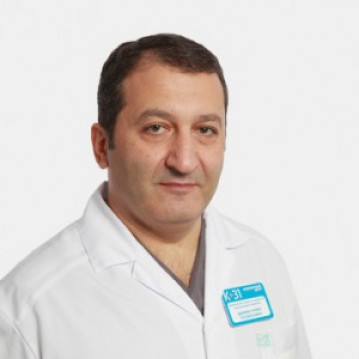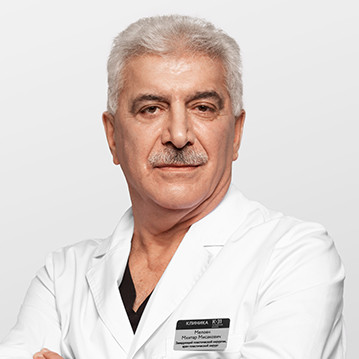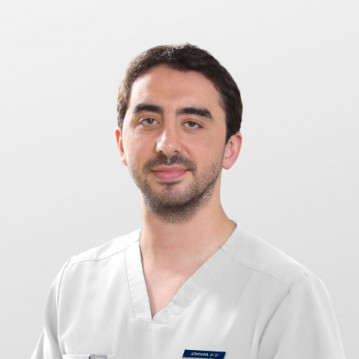
What is otoplasty
Otoplasty is a plastic surgery of the auricles. It corrects their shape, eliminates defects in the ears or lobes. This is an aesthetic plastic surgery aimed at eliminating excessive protrusion of the auricle (protruding ears), eliminating protruding ears (the auricle is incorrectly formed), and making it symmetrical.
After otoplasty, the patient gets rid of complexes associated with defects in the auricles, their unaesthetic shape or location. A plastic surgeon can correct: protruding ears, deformities of the auricle, asymmetry of the ears. Otoplasty can change the shape of the ear and its size. This plastic surgery procedure is carried out even for children (from 6 years of age).
In our clinic, plastic surgery for the correction of the ears is performed on modern equipment by highly qualified plastic surgeons. Such plastic surgery performed at K+31 is safe and has minimal risks of complications after the operation. Call us or leave a request on the site, and we will contact you as soon as possible.
Indications and contraindications
Plastic surgery to change the shape of the ears is very popular, because it is impossible to fix the ears in any other way. A plastic surgeon performs correction and gives an anatomically correct and aesthetically attractive shape to the ears.
Indications for otoplasty are:
- unnatural form of antihelix;
- asymmetrical shape of auricles;
- deformations of the cartilage of the auricles;
- protruding ears;
- congenital absence of one ear or both auricles;
- absence of one ear or both auricles due to an accident, injury;
- damage to the auricles;
- disproportionate ears;
- defects of the earlobe and soft tissues of the ears.
The plastic surgeon of our clinic will give your ears an attractive ideal shape. Give us a call or book an online consultation.
Contraindications for otoplasty:
- oncological diseases;
- chronic diseases in the acute phase;
- cardiovascular disease;
- STDs;
- diabetes mellitus;
- infections or chronic diseases of the ears;
- blood pressure problems;
- menstruation, pregnancy and lactation.
During the consultation, the plastic surgeon will definitely find out the presence or absence of any contraindications before prescribing the procedure.
Types of otoplasty
Depending on the goals of plastic surgery of the auricles, the technique of plastic surgery, the method of surgical correction and other factors, otoplasty is divided into different types.
According to the purpose of plastic surgery, the following types of otoplasty are distinguished:
- Reconstructive plastic surgery of the auricles is the correction of various deformities, the restoration of part of the ear or the entire auricle. As an autograft, the patient's cartilage and its soft tissues are used, which are not rejected and take root with almost 100% probability. But reconstructive plastic is a rather complicated procedure, so the recovery period after the operation lasts longer (2–6 months) than after the aesthetic one. And only an experienced plastic surgeon can carry out the procedure. During the reconstruction of the auricles, a "pocket" is created under the skin, where the cartilage is placed and the ear is formed.
- Aesthetic plastic surgery of the auricles. A simpler plastic surgery, during which a plastic surgeon reduces the size of the auricles, changes their shape, corrects contours, protruding ears, earlobe defects, etc. In our clinic, aesthetic otoplasty of one ear costs from 38,500 rubles. Bilateral aesthetic otoplasty with reconstruction costs from 55,000 rubles. The cost of otoplasty depends on the complexity of the procedure and technique. Specify the exact prices for otoplasty by phone.
According to the technique of plastic surgery:
- Traditional otoplasty - plastic surgery using a scalpel.
- Laser auricular surgery is a more effective and popular auricular correction procedure today.
- Sutureless otoplasty is a plastic surgery to correct the shape of the auricles through an incision behind the ear, which is then not sutured.
- Mustard ear suture otoplasty – correction of ear cartilage through an incision using a suture material that bends the cartilage.
- Furnas ear suture is an otoplasty in which a plastic surgeon sutures cartilage to the temporal bone.
- Auricle plastic surgery without cartilage removal is a plastic surgery performed on children.
- Closed otoplasty is plastic surgery without incisions, but through punctures.
According to the complexity of the procedure, the degrees of otoplasty are distinguished:
- 1 degree of complexity - a slight correction of the shape of the ears, defects in the relief of the auricles by removing part of the cartilage tissue;
- 2nd degree - correction of strong ear protrusion, curl and antihelix defects;
- Grade 3 is the most difficult plastic surgery, a serious cartilage plastic surgery in the presence of anatomical disorders in the structure of the ears.
To correct protruding ears, plastic surgeons use suture plastic surgery of the auricles. The large size of the earlobes is corrected by excision of excess tissue and the formation of a new lobe. Sometimes owners of tunnels become patients of otoplasty specialists. To correct the stretching of the earlobe, the tunnel is closed and excess skin is excised. There is also a demand for "elven ears", which requires complex plastic surgery to form the pointed tip of the ears.
If the primary operation to eliminate ear defects caused the formation of a keloid scar or the aesthetic effect of the plastic was insufficient, the plastic surgeon performs a second otoplasty.
Traditional otoplasty
Traditional auricular surgery is performed under general anesthesia, especially if the patient is a child, or under local anesthesia with a scalpel. The plastic surgeon makes an incision behind the ear or in front of it (depending on the purpose of the procedure). In the latter case, the incisions are placed in the folds of the ears so that they remain invisible. Then the cartilage shape is corrected and the new position is fixed with sutures. After otoplasty, the patient wears a special fixing bandage.
Laser otoplasty
Laser otoplasty is more expensive than the traditional one, it is performed faster and under local anesthesia with a laser scalpel. This is a virtually painless plastic surgery, with less blood than traditional plastic surgery, and a shorter recovery period after surgery.
Laser otoplasty is preferable for children, since anesthesia is not used, it is not accompanied by pain, and incisions after a laser scalpel heal very quickly. During the rehabilitation period, you will need to wear a special bandage that protects the ears from various influences. And in the first days after otoplasty, painkillers may be needed.
The advantages of laser otoplasty are the accuracy and smoothness of the lines, the smaller amount of bleeding, the minimal risk of infection, the short duration of the operation and the recovery period after the operation.













